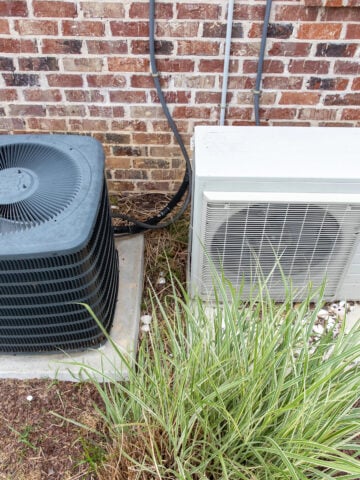Relocating doesn’t have to be stressful. Discover 12 mindful relocating tips to help you stay organized, reduce overwhelm, and protect your mental and physical health during your transition.

Disclaimer: this post may contain affiliate links, and every purchase made through these links will give me a small commission (at absolutely no extra cost for you!) AS AN AMAZON ASSOCIATE AND REWARDSTYLE MEMBER, I EARN FROM QUALIFYING PURCHASES. See Privacy Policy for additional info.
Moving to a new home is often one of life’s most stressful events. Between packing up your belongings, coordinating logistics, and adjusting to a new environment, it’s easy to feel overwhelmed. But what if your move didn’t have to feel like total chaos? What if it could actually become a chance to reset, reconnect, and realign your life with what truly matters?
Instead of focusing solely on boxes and timelines, consider approaching your move with mindfulness and intention. When you prioritize your mental and physical well-being during a transition, you don’t just survive the process—you grow from it. A mindful move isn’t about perfection; it’s about taking simple, strategic steps to protect your peace and make the journey a little smoother.
In this post, I’m sharing 12 practical relocating tips that helped me turn a potentially stressful relocation into a more balanced, grounded experience. From setting your intention early to creating wellness routines and unpacking with ease, these strategies are designed to help you move with more clarity, less stress, and a stronger sense of self. Let’s dive in.
1. Set Your Intention Early
Most people move for a reason—a new job, a better neighborhood, or a fresh start. But beneath those logistics lies a deeper intention. Identify yours. Ask yourself what you truly hope to gain from the move. More peace? More time with family? Better access to nature?
Once you name your goal, it becomes a compass. It guides your decisions and helps you stay focused when things feel overwhelming. Writing it down or keeping it visible during your transition can provide clarity when you need it most.
2. Create a Realistic Timeline & Checklist
Time is one of the most significant stressors in any move. Creating a detailed timeline helps keep your progress measurable and trackable. Break your move into phases: preparation, packing, moving day, and settling in. Assign tasks to each phase.
Use a checklist to track progress. Digital tools like Trello or Google Keep can keep your list mobile and editable, allowing you to access and update it on the go. Don't forget to pad your schedule with buffer time. Unexpected issues are part of moving.
3. Declutter Before You Pack
Moving is the perfect time to purge. Every item you let go of reduces the physical and emotional weight of your move. Start with non-sentimental areas, such as the pantry or bathroom. Then move to clothes, books, and keepsakes.
Be honest: if you haven't used it in a year, chances are you don't need it. Donate, sell, or responsibly recycle unwanted items. A decluttered home is easier to pack—and a decluttered mind is easier to manage.
4. Maintain Your Wellness Routine
It's easy to let healthy habits slide during a move. But this is when your routine matters most. Stick to your sleep schedule. Drink plenty of water. Move your body daily, even if it's just stretching or taking a walk around the block.
Eat nourishing meals. Don't rely solely on takeout and snacks. Even prepping a few freezer-friendly meals ahead of time can help you stay on track.
5. Create a Relocating Comfort Kit
Relocation can strip away the familiar. A comfort kit grounds you. Include things that soothe you, such as herbal tea, essential oils, a good book, soft socks, or a playlist.
Keep it accessible—not buried in a moving box. During long days, your kit becomes a lifeline to your calm.
6. Hire Trusted Professionals
Doing everything yourself is tempting, mainly to save money. However, burnout also has a cost. Hiring reliable movers or packers reduces both physical strain and decision fatigue.
Start by asking for recommendations. Read reviews. Verify credentials and insurance. Whether it's a full-service company or assistance with loading a truck, turning to reputable moving companies can significantly reduce your stress levels and help ensure a smooth transition.
7. Seek Emotional Support If Needed
The emotional side of moving often goes unspoken. You're not just packing things—you're leaving memories, routines, and sometimes people behind.
If you're struggling, talk to a friend, a coach, or a therapist. You don't have to face the transition alone. Joining online communities or local groups can also help you find encouragement and perspective.
8. Organize for Easy Unpacking
Unpacking is less stressful when things are clearly labeled and grouped by priority. Use color-coded labels or numbering systems—Mark boxes by room and urgency.
Pack an "Open First" box with items like toiletries, chargers, medications, and a change of clothes. This small effort can save big headaches when you arrive.
9. Take Breaks & Practice Breathwork
You are not a machine. Taking short breaks prevents decision fatigue and reduces the risk of mistakes. Every hour or so, pause. Sit down. Breathe.
Simple breathwork techniques, such as box breathing or deep belly breathing, can help reset your nervous system and provide you with the stamina to keep going.
10. Embrace Flexibility
No move goes 100% according to plan. Trucks break down. Closings get delayed. Furniture doesn't fit.
Let go of perfection. When setbacks happen, return to your intention. Adjust. Move forward. Flexibility reduces frustration and opens the door to creative solutions.
11. Prioritize Setting Up Wellness Spaces First
Your bedroom, kitchen, and a quiet space for relaxation should be among the first areas you organize. These zones support sleep, nourishment, and emotional recovery.
Don't worry about decorating yet. Focus on function and comfort. Getting these spaces operational first builds a sense of control and safety.
12. Establish a New Local Routine After Relocating
Explore your new area slowly. Find a nearby park, a go-to grocery store, or a walking trail. Build routines around things that make you feel healthy and grounded.
Even small rituals—such as morning coffee on the porch or a daily dog walk—help turn your new house into a true home.
Relocating Tips Conclusion
Moving is more than logistics. It's a life transition. By approaching it with intention, structure, and self-care, you can turn what often feels chaotic into something calm and even transformative. Use these 12 relocating tips as a guide, not just for your move, but for your health and well-being throughout the process. You deserve to start this new chapter feeling your best.









Leave a Reply